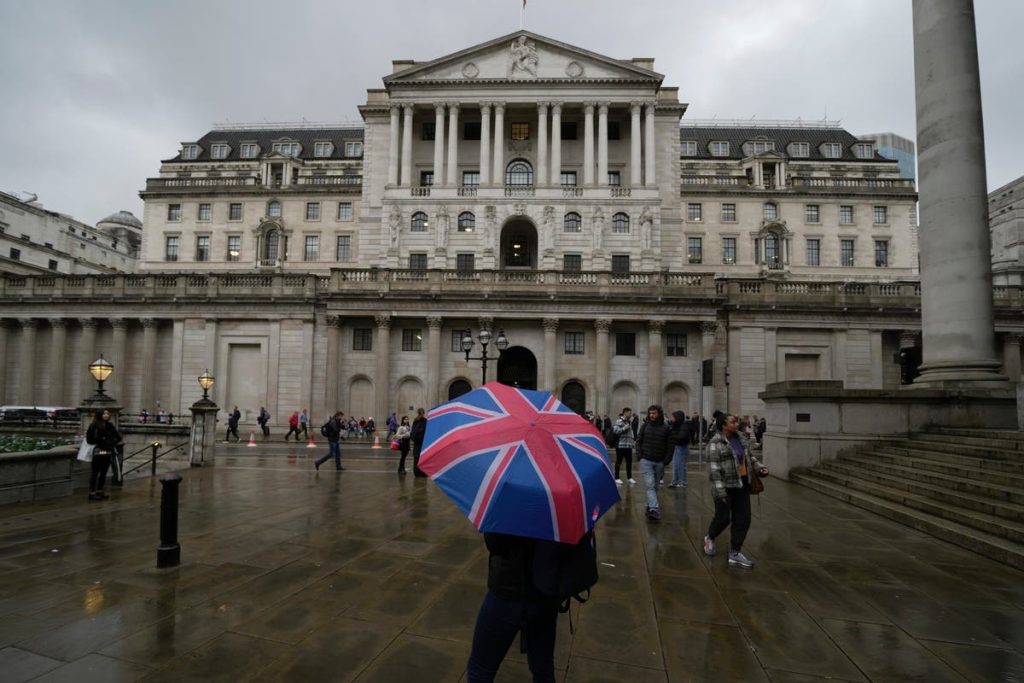UK mortgage borrowers might soon have a reason to celebrate as interest rates are projected to drop significantly. According to a recent prediction by Goldman Sachs, interest rates in the United Kingdom could decrease to 2.75% by the end of next year. This forecast marks a shift that could influence various sectors of the economy.
Interest Rate Projections
Goldman Sachs, a leading US investment bank, has anticipated a more rapid decrease in UK interest rates than previously expected by borrowers and lenders alike. Currently, the borrowing rate stands at 5%, but by the end of 2023, it is forecasted to plummet to 2.75%. This prediction is in part due to the faster-than-expected containment of inflation in the UK, which now sits at 1.7%, below the Bank of England’s target of 2%.
Impact on Mortgage Borrowers
The anticipated reduction in interest rates could bring relief to mortgage borrowers who have faced financial strain in recent years. Following a turbulent period initiated by the controversial mini-Budget of Liz Truss, mortgage costs soared, with the average two-year fixed-rate mortgage increasing from 3.66% to 5.24%. The predicted rate cut could alleviate some of these pressures.
A decrease in borrowing costs not only benefits individual borrowers but also signals economic growth opportunities. Lower rates mean reduced expenses for mortgage holders, translating to increased disposable income and potential economic stimulation.
Effect on Savers and Lenders
While a decline in interest rates could benefit borrowers, savers might face less favourable returns. Commercial lenders adjust their rates for borrowers and savers based on the base rate set by the Bank of England. Therefore, when borrowing costs decrease, the returns for savings accounts typically follow suit, posing a challenge for those reliant on interest-based income streams.
Conversely, commercial banks could experience a different set of challenges. They must navigate the balance between offering attractive borrowing terms and maintaining profitability in a lower interest environment. These dynamics require strategic adjustments in their lending practices and financial products.
Economic Influences
Several economic factors contribute to the anticipated drop in interest rates. Goldman Sachs cites “slow productivity growth, falling prices of capital goods, and population aging” as primary influences expected to suppress rate increases. Additionally, while rising public debt and population growth could counterbalance this trend, the overall projection remains one of declining rates.
The Bank of England’s strategy plays a vital role in shaping this forecast. Having previously increased rates to 5.25% as a pre-emptive move against inflation, the Bank now appears poised to adjust its approach in response to the changing economic landscape, considering the moderated inflation levels.
Government and Fiscal Policy
Lower interest rates provide a double-edged sword for the UK government and Chancellor Rachel Reeves. On one side, reduced borrowing costs offer the Treasury an opportunity to invest in economic growth initiatives without incurring prohibitive financing costs. On the other, careful financial management is crucial to prevent exacerbating the nation’s debt levels.
The government’s ability to navigate these economic conditions affects public policy and strategic investments. A balanced approach is necessary to harness the benefits of lower rates while preventing long-term fiscal instability that could arise from increased borrowing.
Market Reactions
The financial markets have shown varied responses to the potential interest rate cuts. Currently, the anticipation is for the Bank of England to reduce rates to 3.5%, reflecting more conservative expectations than those projected by Goldman Sachs. This cautious stance is evident amidst cautious optimism regarding inflation control.
Stakeholders, including investors and financial analysts, observe these developments closely. The balance between managing inflation, providing competitive returns, and supporting economic growth remains a delicate task for policymakers and market participants alike.
Long-term Forecasts
Looking ahead, the trajectory of interest rates remains intertwined with broader economic trends. Analysts predict that while rates are expected to fall in the near term, long-term projections account for potential economic shifts that could necessitate rate hikes. The ongoing evaluation of economic conditions will inform strategic decisions by the Bank of England as it aligns monetary policy with financial realities.
As the UK anticipates a possible reduction in interest rates to 2.75% by next year, the implications are multifaceted, with potential benefits for borrowers and challenges for savers. The economic landscape is dynamic, requiring strategic navigation by both government and financial institutions. The Bank of England’s forthcoming decisions will be instrumental in shaping the outcomes of this anticipated rate shift.

